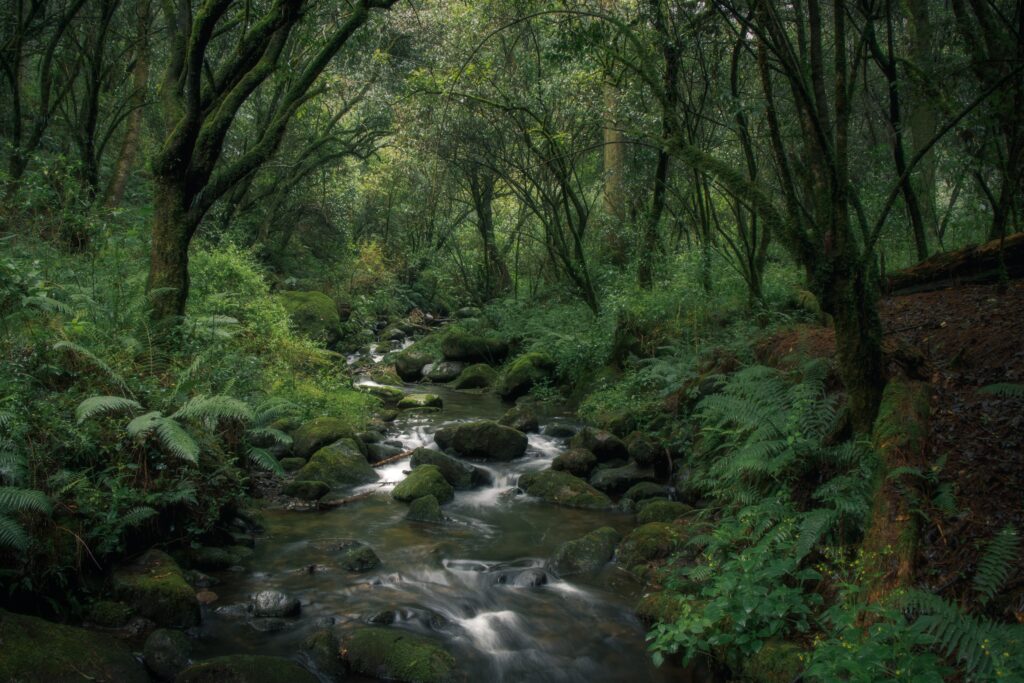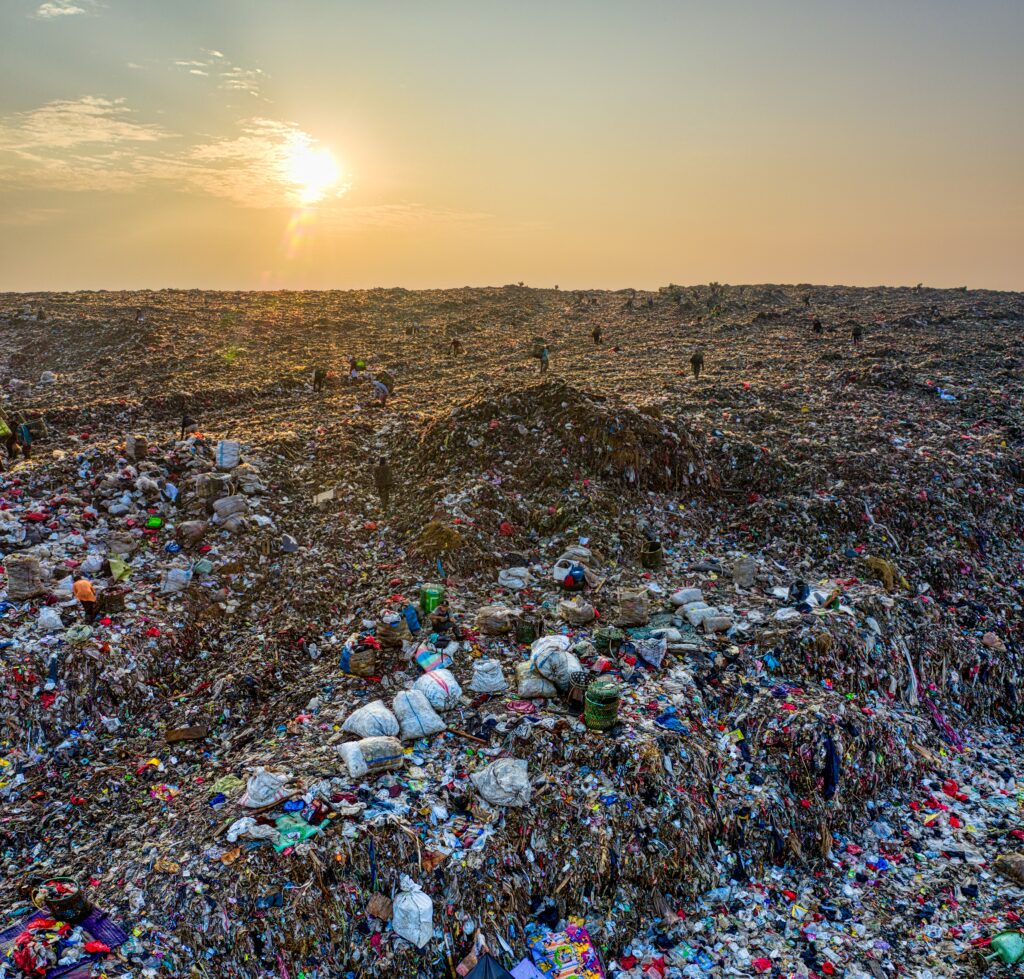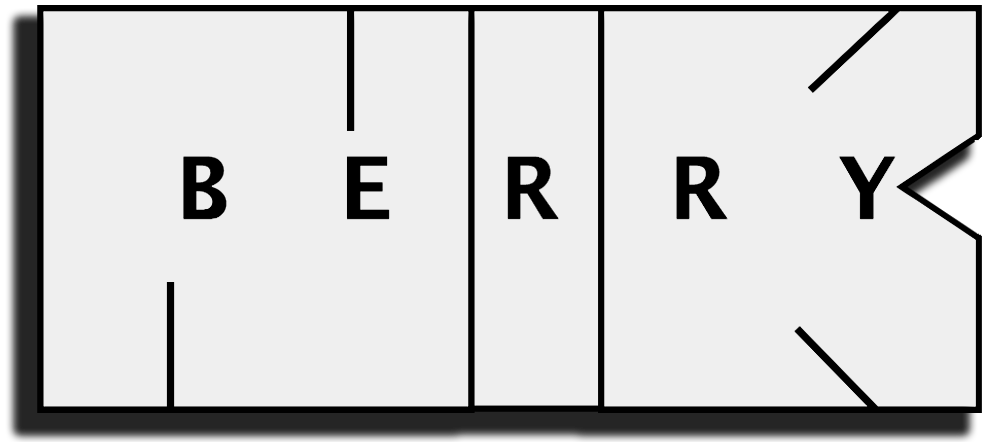- Secular Sundays – Introduction
- Growth Mindset
- Environmental Stewardship
- The Importance of Gratitude
My middle child recently got angry at the other kids for throwing away recyclables. She was lecturing them about the environment as best she could so I offered for her to help me teach this weeks lesson on environmental stewardship.
Introduction
The goal of this week’s lesson is to introduce the concept of environmental stewardship. I want to make it easy to understand for kids and those are two big words so we’ll start by breaking down that title into an easier to understand term of “being in charge of taking care of the planet.”
Introduction Activity
- Define “environmental stewardship” as being responsible for and protecting the natural world through conservation, sustainable practices, and respect for the environment.
- Discuss the importance of taking care of the planet and how it benefits us and future generations.
- Look at the two pictures below. Discuss why it’s important we take care of the planet and protect the natural beauty.


Historical Examples
Example #1 – Theodore Roosevelt
President Theodore Roosevelt has some controversy behind him but he also is responsible for “federal protection for almost 230 million acres of land, an area equivalent to the entire Eastern Seaboard from Maine to Florida.” Because of his work much of the beauty of the United States belongs to the people.

Because of his work famous parks like Yosemite (where the giant red woods grow), The Grand Canyon, National Bridges, and many more are protected as national parks and monuments.
References:
Example #2 – Wangari Maathai
She mobilized Kenyans, particularly women, to plant more than 30 million trees, and inspired the United Nations to launch a campaign that has led to the planting of 11 billion trees worldwide. More than 900,000 Kenyan women benefited from her tree-planting campaign by selling seedlings for reforestation.
References:
Historical Examples Activity
- Engage in a discussion about what we have learned from these historical examples.
- Ask questions like: “Why is it important to take care of our environment?” and “How can we apply the values we learned from these individuals in our daily lives?”
How we can be environmental stewards
Being an environmental steward is easy and you can start today. The following is a list of some simple steps to start making changes that can help to improve the planet and make it better for you and for future generations.
Step 1: Identify a need
Environmental stewardship can involve either starting something positive or stopping something negative. Look for opportunities to do both at the same time and your changes could be even more impactful. Some examples are:
- Reducing Plastic Waste
- Using a reusable water bottle instead of single-use plastic bottles.
- Bringing his own cloth bags to the store instead of using plastic bags.
- Choosing products with minimal plastic packaging when shopping with his parents.
- Organizing a Neighborhood Cleanup
- Gather a group of friends and their families and provide them with gloves and trash bags
- Together, pick up litter in the park, ensuring that it’s clean and beautiful for everyone to enjoy
- Conserving Water
- Take shorter showers
- Turn off the faucet while brushing your teeth
- Fixing any leaks in your home promptly
- Creating a Mini Garden
- Can product fruits and vegetables reducing the need for large scale farming
- Planting native flowers and shrubs can attract pollinators like bees and butterflies helping them thrive
- Participating in Community Programs
- Tree planting events
- Educational workshops
- Initiatives to reduce energy consumption in the neighborhood
- Recycling and Composting
- Recycling paper, glass, and plastic items appropriately
- Composting kitchen waste, turning it into nutrient-rich soil for the garden
- Supporting Wildlife
- Building birdhouses and bird feeders provide food and shelter for local birds
- Making sure to clean up when visiting nature keeps it preserved for the wildlife who live there
- Educating Others
- Sharing about what you’ve learned and loved doing from any of the above or other activities
Step 2 – Take small actions Today
Taking care of the planet is work. It can’t be done in a day but you can take small actions today that can make a difference tomorrow. For whichever need you identified in step 1 identify some simple and small actions you can immediately start implementing today. It can be as simple as always taking the few extra steps to separate your trash making sure to put recyclables in a recycling bin.
Step 3 – Be consistent
Consistency is the key to any habit. As you take those small actions make sure to set reminders to keep doing them daily. Eventually you’ll do them without even thinking, freeing up your mind to think of more ways to improve.
Step 4 – Reflect and improve
As you build to make habits keep a journal of your successes and especially your failures taking time to think about how you could have done them differently. Every so often go back and read about how you were doing and as you learn from your successes and failures find ways you can improve to keep doing better. You may not get to the level of Teddy Roosevelt or Wangari Maathai but you can make a difference in your life and your community. Who knows, one day someone may be using you as an example of someone who made a difference.
